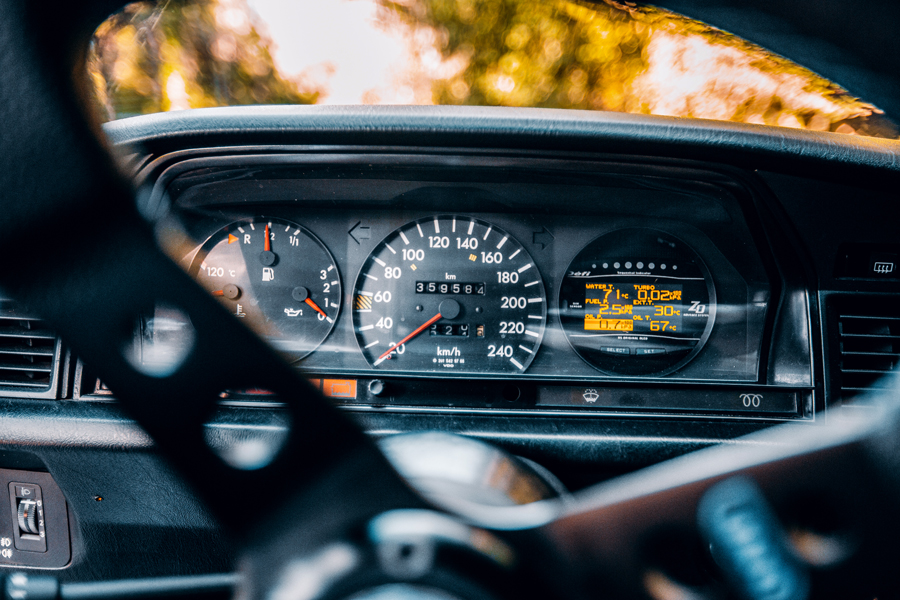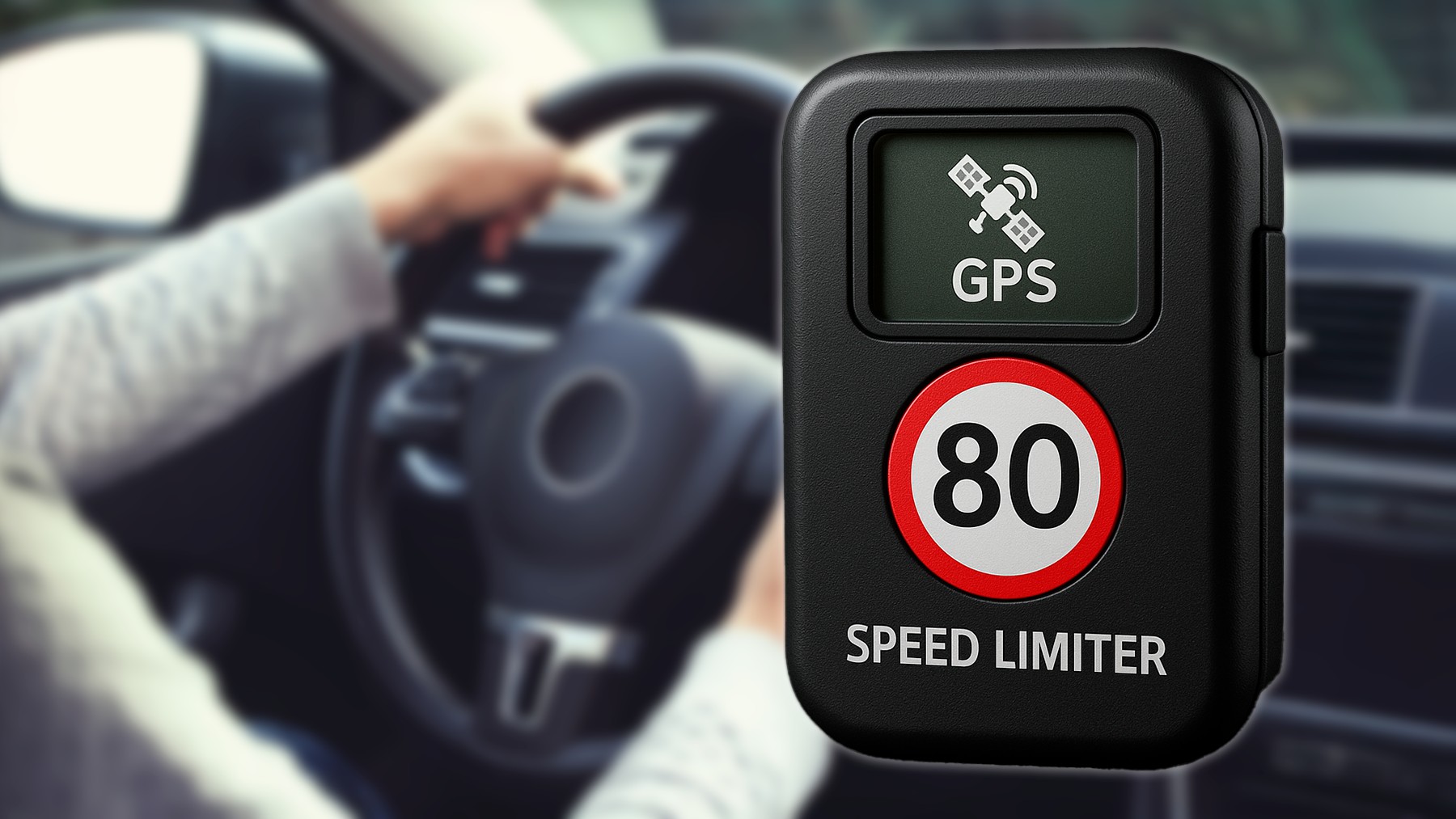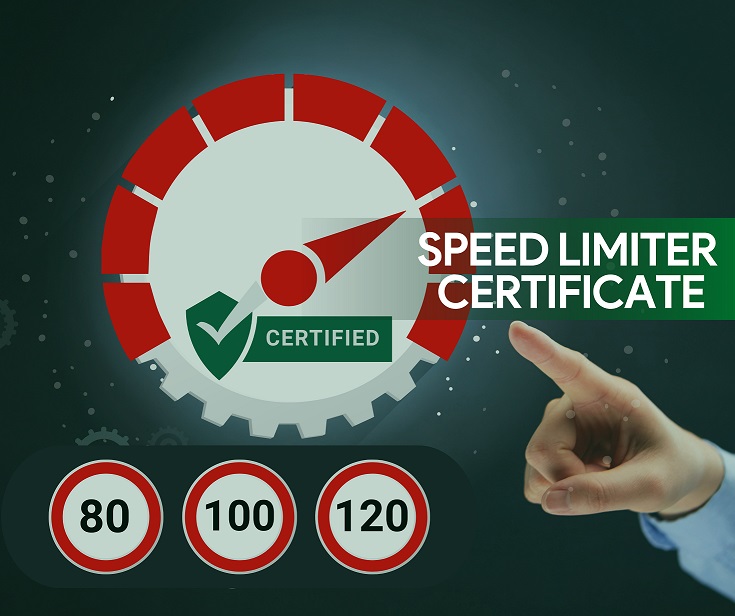If you’re trying to choose between an ECU speed limiter and a GPS-based speed limiter for vehicles in Malaysia, here’s the short answer:
An ECU speed limiter is better for strict, tamper-resistant speed control — perfect for school buses and government fleets. A GPS speed limiter is ideal for flexible fleet monitoring, route-based speed limits, and remote oversight — great for logistics and delivery vehicles.
Both systems have their place, and the best choice depends on your fleet’s needs, legal compliance, and terrain coverage across Malaysian roads. Let’s break it down in detail.
What Is an ECU Speed Limiter?

An ECU speed limiter is a smart electronic device that connects directly to a vehicle’s Engine Control Unit (ECU). The ECU is basically the vehicle’s onboard computer — it controls many vital engine functions like fuel injection, throttle position, ignition timing, and gear shifting.
The speed limiter works by communicating with the ECU to restrict how fast the vehicle can go. When the vehicle reaches the maximum speed set by the system — for example, 90 km/h — the limiter sends a signal to the ECU to reduce fuel delivery or adjust throttle response, stopping the vehicle from accelerating beyond that limit.
It’s like having a digital co-driver that says, “That’s fast enough,” and then gently holds the car at that speed, no matter how hard the driver presses the pedal.
How Does It Work?
Here’s a simple step-by-step overview of how an ECU speed limiter functions:
-
Preset Speed Configuration
The system is programmed with a fixed speed limit, usually in compliance with regulations — such as JPJ’s school bus speed limits in Malaysia. -
Real-Time Engine Monitoring
Sensors constantly monitor the vehicle’s speed via the ECU and engine components. -
Trigger & Intervention
When the preset speed is reached, the limiter automatically limits the throttle signal or reduces fuel injection. In some cases, it also adjusts air intake or transmission response. -
Driver Feedback
Some systems flash a warning light or beep to inform the driver they’ve hit the speed threshold.
Key Features of ECU-Based Speed Limiters
-
High Precision Control
Because it directly controls engine systems, the ECU limiter can accurately hold the vehicle’s speed without fluctuations — unlike mechanical governors or GPS-based systems that might lag. -
Instant Response Time
It reacts in milliseconds, ensuring no overshooting of speed, especially critical in urban traffic or school zones. -
Tamper-Resistant by Design
These systems are hardwired and sealed. Many come with anti-tamper seals, protected fuse boxes, and password-protected calibration software. This makes them highly compliant with JPJ enforcement standards. -
Signal Independence
Unlike GPS limiters, ECU limiters don’t rely on satellite signals. This means they continue to work undisturbed in tunnels, rural areas, or signal dead zones — making them ideal for school buses or government vehicles that operate across variable terrain. -
Vehicle Compatibility
ECU limiters are often tailored to fit different vehicle types — from small vans to heavy-duty trucks. They are compatible with CAN bus systems, OBD ports, or direct wiring, depending on the vehicle’s make and model.
Why Is It Popular in Malaysia?
In Malaysia, JPJ (Jabatan Pengangkutan Jalan) requires certain classes of commercial and public transport vehicles — especially school buses, stage buses, and government fleets — to install certified speed limiters.
An ECU limiter fits perfectly in this regulatory framework because:
-
It offers reliable speed control regardless of GPS coverage.
-
It’s easy to certify under JPJ’s speed limiter certificate program.
-
It supports dual-speed configurations, useful for urban vs. highway zones (when combined with other modules).
-
It’s durable in hot and humid conditions, suited for Malaysian roads.
Installation & Maintenance
Most ECU speed limiters are installed by certified automotive technicians. The process involves:
-
Identifying the ECU or control unit access point.
-
Wiring the limiter to the engine management system or OBD-II port.
-
Setting the desired speed limit using manufacturer software.
-
Sealing the system and issuing a calibration or compliance certificate (required by law).
Maintenance is minimal. As long as the wiring remains intact and there’s no ECU reprogramming from third parties, the limiter works consistently over the vehicle’s lifespan.
Ideal Use Cases
-
School Buses: Fixed speed ensures child safety, especially in neighborhoods or near schools.
-
Government Fleets: Consistent and tamper-proof speed regulation improves driver accountability.
-
Public Transport Vehicles: Helps reduce speeding violations and improves fuel efficiency.
What Is a GPS Speed Limiter?

A GPS speed limiter is a smart electronic system that uses Global Positioning System (GPS) technology to control and limit a vehicle’s speed based on its real-time location. Unlike traditional speed limiters that operate internally through the vehicle’s ECU (Engine Control Unit), a GPS-based limiter uses satellite data and predefined geofencing rules to dynamically adjust the vehicle’s maximum speed — depending on where it is.
This system combines two powerful technologies:
-
Speed limiting – which prevents the vehicle from exceeding a set limit.
-
GPS tracking – which constantly monitors the vehicle’s location, movement, and speed.
The result? A more intelligent, adaptable way to manage vehicle speeds — especially for fleets operating across different zones, road types, or jurisdictions in Malaysia.
How It Works
Here’s a breakdown of how a GPS speed limiter functions on the road:
-
GPS Receiver & Speed Controller Installed
-
A GPS antenna and limiter device are mounted in the vehicle. These are connected to the vehicle’s accelerator control system or throttle actuator.
-
-
Preloaded Speed Zones
-
Your fleet manager defines geofenced zones — for example:
-
30km/h for school zones or residential areas
-
60km/h in urban areas
-
90km/h on expressways
-
-
-
Live Location Monitoring
-
As the vehicle moves, the GPS receiver determines its exact position, speed, and heading.
-
-
Dynamic Speed Regulation
-
When the vehicle enters a predefined zone, the system automatically adjusts the speed cap to match that area’s limit.
-
-
Remote Control & Reporting
-
All data is sent to a centralized dashboard, where fleet operators can monitor driving behavior, speed violations, idle time, and route history in real time.
-
Key Features & Benefits
Terrain-Based Speed Limiting (Geofencing)
The standout feature of GPS speed limiters is geofence intelligence. This lets you control vehicle speed based on location context:
-
Lower speeds in residential or industrial zones
-
Higher speeds on highways
-
Customized zones near schools, toll booths, or construction sites
This granular control improves both safety and compliance with local traffic rules.
Remote Monitoring and Management
Unlike ECU-based systems, GPS limiters give you remote access through an online platform or app. You can:
-
Adjust speed limits on the fly
-
View driver behavior in real time
-
Receive alerts for speed violations or route deviations
-
Generate reports for compliance and performance
Perfect for fleet managers who oversee multiple vehicles across Peninsular and East Malaysia.
Integration with Fleet Telematics
Modern GPS limiters easily integrate with fleet management systems, offering seamless data sharing across:
-
Driver scoring systems
-
Fuel efficiency tools
-
Maintenance alerts
-
Route optimization algorithms
This positions GPS speed limiters as a core part of any data-driven fleet operation.
Supports Multi-Speed Configuration
In Malaysia, vehicles like school buses often require dual-speed configurations — lower speeds in school zones and higher ones elsewhere. GPS limiters handle this automatically without driver input, which helps ensure road safety and regulatory compliance.
Components of a GPS Speed Limiter System
| Component | Description |
|---|---|
| GPS Antenna | Captures real-time satellite signals for location tracking |
| Speed Controller | Regulates engine response to maintain set speeds |
| Relay Module | Interfaces with the accelerator/throttle system |
| Software Dashboard | Web-based interface to manage zones, vehicles, and reports |
| Power Supply | Connected to vehicle ignition or battery |
Best Use Cases in Malaysia
-
Fleet Operations (Logistics, Courier, E-commerce)
-
Companies like parcel delivery or supply chain operators often cover hundreds of kilometers per day. With GPS limiters, they can monitor:
-
Speed consistency
-
Unauthorized detours
-
Zone-based regulation in congested areas (like Klang Valley)
-
-
-
School Transport Providers
-
You can automatically reduce the bus’s speed near school zones, improving student safety without relying on the driver’s judgment.
-
-
Oil & Gas or Mining Fleets
-
GPS limiters work great in restricted industrial zones, where strict speed caps are essential to avoid accidents and meet HSE standards.
-
-
Interstate Transport
-
Routes across states (e.g., from Johor to Perlis or Sabah to Sarawak) often cross multiple jurisdictional zones. GPS systems adapt automatically, no need to reprogram the vehicle.
-
Is It JPJ Compliant?
Yes — if the system meets Malaysian standards and includes:
-
Tamper detection
-
Data logging capabilities
-
Secure calibration
-
Certified installation
While ECU limiters are more commonly associated with JPJ-mandated systems, many advanced GPS-based systems are also compliant — especially when they include speed limiting hardware, not just tracking features.
ECU vs GPS Speed Limiters: Feature Comparison
| Feature | ECU Speed Limiter | GPS Speed Limiter |
|---|---|---|
| Installation Location | Inside vehicle’s ECU | Mounted with GPS unit |
| Accuracy | Very High – Engine-level control | Moderate – Depends on GPS signal |
| Tamper Resistance | Strong – Hardwired | Varies – Depends on software/device |
| Remote Monitoring | Not Available | Yes – Web-based tracking |
| Terrain/Zone Adjustments | No | Yes – Geofencing supported |
| Ideal Use Cases | School buses, government fleets | Logistics, courier fleets |
| Compliance with JPJ | Full compliance with JPJ | Varies – Must meet system standards |
| Maintenance Needs | Low – Hardware-based | Moderate – Software and connectivity |
Which Works Best on Malaysian Roads?
Malaysian roads are diverse — from bustling Kuala Lumpur highways to rural areas in Sabah and Sarawak. So choosing the right system depends on your route and vehicle type.
-
Use ECU Limiters if:
-
You manage school transportation
-
You run government or municipal vehicles
-
You require JPJ-certified equipment
-
You need a tamper-proof solution
-
-
Use GPS Limiters if:
-
You manage logistics or e-hailing fleets
-
You need real-time driver tracking
-
You want geofence-based speed zones
-
You cover routes with variable speed limits
-
Real-World Use Case Scenarios in Malaysia
School Bus Safety
Resolute Dynamics offers a Dual Speed Limiter system that enforces lower speeds near schools and higher speeds on highways, based on predefined zones. This ensures children’s safety while staying efficient on long routes.
Logistics & Delivery Fleets
For operators like e-commerce, courier services, and fleet leasing, GPS limiters allow real-time tracking, driver behavior insights, and instant alerts for speeding.
Government & Municipal Vehicles
A robust ECU speed limiter helps ensure strict enforcement, avoids unauthorized modifications, and maintains public safety standards — especially in sensitive roles like waste collection, police vehicles, and public buses.
Legal & Compliance Considerations (JPJ)
In Malaysia, the Road Transport Department (JPJ) has made it mandatory for certain categories of vehicles to install certified speed limiter systems. These rules are not just guidelines — they are enforceable regulations designed to improve road safety, especially for commercial vehicles, school buses, and government fleets.
Understanding the legal framework is essential if you’re a fleet operator, transport contractor, or school service provider. Non-compliance can result in fines, license suspension, or vehicle impoundment.
Who Must Comply?
According to JPJ’s updated guidelines, the following vehicles are legally required to have functioning speed limiters installed:
-
School buses (bas sekolah)
-
Commercial vehicles transporting goods
-
Passenger vehicles exceeding a certain weight class (usually above 3,500 kg)
-
Government or municipal fleet vehicles
-
Interstate coaches and express buses
These regulations are part of Malaysia’s effort to reduce accidents caused by overspeeding, especially in high-risk zones like school areas, urban centers, and federal highways.
What Is a Speed Limiter Certificate?

After installing a compliant speed limiter — either ECU-based or GPS-integrated — the vehicle must be issued a Speed Limiter Certificate. This certificate serves as proof of compliance and may be required during:
-
JPJ roadblocks
-
PUSPAKOM inspections
-
Vehicle permit renewals
-
Insurance claims involving speed
The certificate includes:
-
Vehicle and chassis details
-
Type and model of speed limiter used
-
Date of installation and calibration
-
Installer credentials and signature
-
Maximum programmed speed (e.g., 90km/h)
Tamper-Proof Requirements
One of the most critical legal aspects of compliance is tamper resistance. JPJ requires that all approved speed limiter systems must:
-
Be sealed and secured against unauthorized changes
-
Include tamper indicators or electronic logs
-
Require authentication (PIN/password) to access settings
-
Maintain data integrity logs for at least 6 months
This ensures that no driver or mechanic can bypass or disable the speed limiter to increase performance illegally.
Note: Vehicles found with tampered or non-functioning speed limiters may be immediately blacklisted and ordered off the road.
Dual-Speed Functionality in School Zones
For school buses, JPJ encourages the use of dual-speed limiter systems, especially in urban or residential areas.
How it works:
-
Limit speed to 40km/h within school zones or city streets
-
Automatically switch to 60–70km/h on highways and open roads
-
This is typically managed through GPS-based geofencing or manual switch systems approved by authorities
This functionality greatly improves child safety, especially during pick-up and drop-off times in crowded areas.
Calibration & Periodic Checks
All speed limiter systems must undergo initial calibration at the time of installation. JPJ and related inspection bodies such as PUSPAKOM may enforce periodic re-inspections to ensure continued functionality.
During periodic checks, inspectors may:
-
Verify current limiter settings
-
Check for tampering or unauthorized changes
-
Review speed logs or data history
-
Validate system compliance with original certification
GPS-Based Limiter Requirements
While ECU-based systems are more common in JPJ requirements, GPS-enabled speed limiters are gaining approval provided they include hardware enforcement, not just tracking.
To qualify for certification, a GPS limiter must:
-
Be able to physically restrict vehicle acceleration
-
Work in tandem with speed controllers, not just alert systems
-
Include remote locking or cloud-based tamper alerts
-
Offer backup functionality in case of GPS signal loss (e.g., ECU fallback)
How Resolute Dynamics Ensures Compliance
At Resolute Dynamics, all speed limiter products — from basic ECU models to advanced GPS-integrated solutions — are:
-
Tamper-proof, with audit trails and electronic sealing
-
JPJ-compliant, ready for immediate certification
-
Dual-speed ready, especially for school bus operators
-
Easy to calibrate, with installer training provided
-
Backed by documentation, including installation reports and certificates
We work closely with JPJ-approved inspection centers and stay updated on the latest Malaysian transport regulations to ensure your fleet stays on the right side of the law.
Summary: What You Must Do to Stay Compliant
| Legal Requirement | Description |
|---|---|
| Install certified speed limiter | Must be on approved JPJ list |
| Obtain Speed Limiter Certificate | Issued after professional installation and calibration |
| Use tamper-resistant systems | Physical or digital tamper prevention required |
| Implement dual-speed zones (if needed) | Especially required for school buses and urban fleet vehicles |
| Allow periodic inspections | Be ready for spot checks or annual compliance renewals |
Penalties for Non-Compliance
Failing to install a speed limiter — or tampering with one — can result in:
-
Hefty fines
-
Roadworthiness failure at PUSPAKOM
-
Permit suspension from JPJ
-
Loss of fleet insurance coverage
-
Public blacklisting for transport contracts
Resolute Dynamics’ Solutions for Malaysian Roads
At Resolute Dynamics, the focus is on safety, innovation, and compliance. Here are key products tailored for Malaysia:
-
Vehicle Speed Limiter – Direct ECU control for fixed maximum speed
-
Dual Speed Limiter – Terrain-based limit switching
-
GPS Tracking Systems – Real-time fleet visibility and route optimization
-
School Bus Safety Solutions – Designed for compliance and protection
Each product is customizable, certifiable, and built with precision engineering to match Malaysia’s transport needs.
Conclusion: Which Limiter Should You Choose?
If you’re looking for bulletproof speed control, go with the ECU limiter — it’s more secure and consistent. If you want monitoring, flexibility, and remote control, then a GPS-based limiter is the better fit.
For many Malaysian operators, the smartest move is a hybrid approach: ECU for speed enforcement, and GPS for tracking and analytics.
FAQ
1. Is ECU or GPS speed limiter more reliable?
ECU is more reliable for strict control. GPS offers more data and flexibility but can be signal-dependent.
2. Do Malaysian laws require speed limiters?
Yes, JPJ mandates limiters for certain fleets, especially school buses and public vehicles.
3. Can I combine both ECU and GPS systems?
Yes. Many fleet operators use both for safety + tracking benefits.
4. How does a dual speed limiter work?
It switches between two preset speed limits based on GPS location — great for switching between school zones and highways.
Want to protect your fleet, stay compliant with JPJ, and ensure safer roads?
Resolute Dynamics has a solution for every route.
